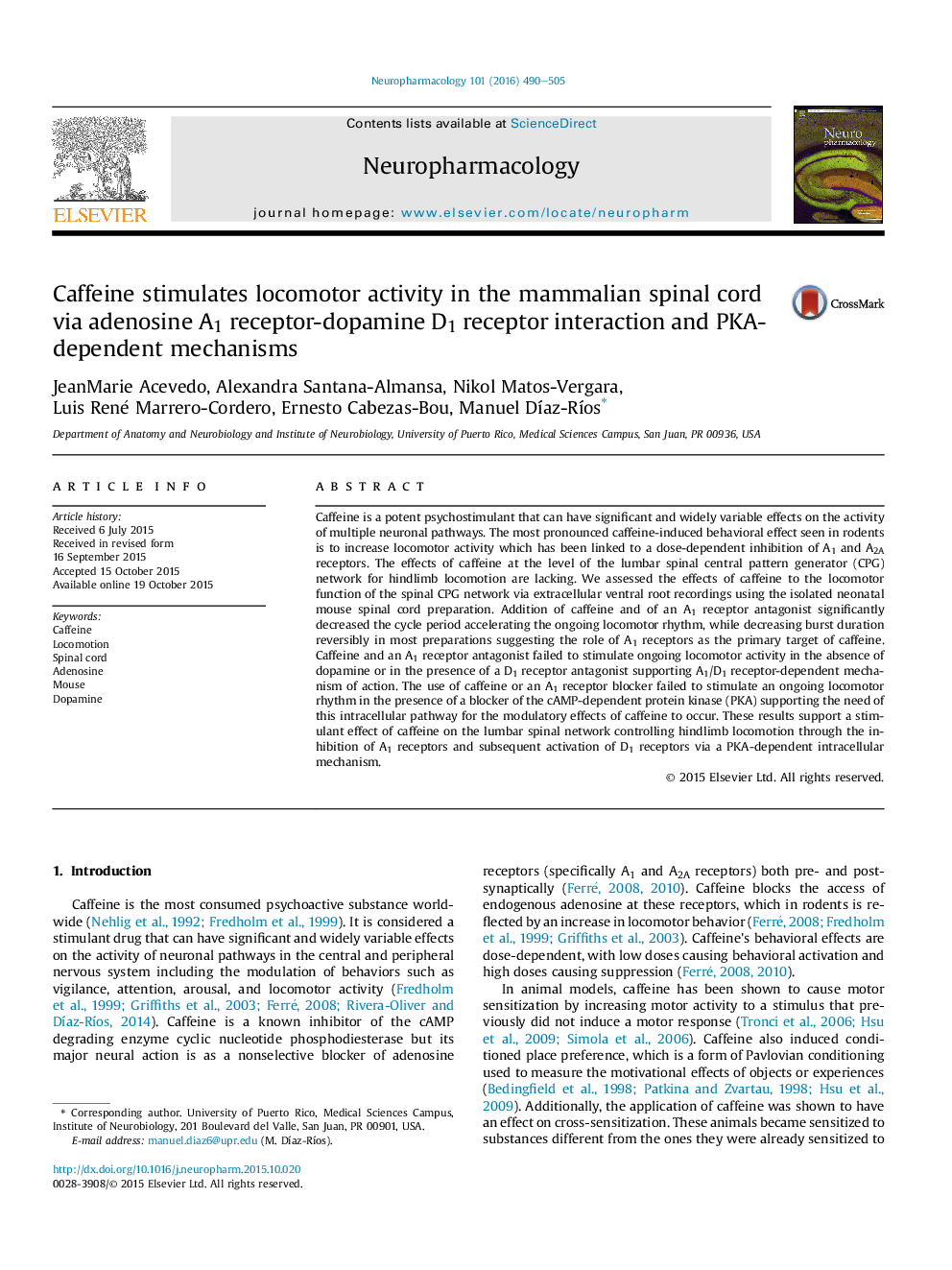| کد مقاله | کد نشریه | سال انتشار | مقاله انگلیسی | نسخه تمام متن |
|---|---|---|---|---|
| 2493139 | 1556614 | 2016 | 16 صفحه PDF | دانلود رایگان |

• We used the neonatal mouse spinal cord to study the effects of caffeine.
• We examined changes in fictive locomotor activity focusing on bursting activity.
• Caffeine stimulated locomotion through blockade of A1 receptors.
• The effects of caffeine were found to depend on the activation of D1 receptors.
• Caffeine stimulation of locomotion is dependent on PKA intracellular signaling.
Caffeine is a potent psychostimulant that can have significant and widely variable effects on the activity of multiple neuronal pathways. The most pronounced caffeine-induced behavioral effect seen in rodents is to increase locomotor activity which has been linked to a dose-dependent inhibition of A1 and A2A receptors. The effects of caffeine at the level of the lumbar spinal central pattern generator (CPG) network for hindlimb locomotion are lacking. We assessed the effects of caffeine to the locomotor function of the spinal CPG network via extracellular ventral root recordings using the isolated neonatal mouse spinal cord preparation. Addition of caffeine and of an A1 receptor antagonist significantly decreased the cycle period accelerating the ongoing locomotor rhythm, while decreasing burst duration reversibly in most preparations suggesting the role of A1 receptors as the primary target of caffeine. Caffeine and an A1 receptor antagonist failed to stimulate ongoing locomotor activity in the absence of dopamine or in the presence of a D1 receptor antagonist supporting A1/D1 receptor-dependent mechanism of action. The use of caffeine or an A1 receptor blocker failed to stimulate an ongoing locomotor rhythm in the presence of a blocker of the cAMP-dependent protein kinase (PKA) supporting the need of this intracellular pathway for the modulatory effects of caffeine to occur. These results support a stimulant effect of caffeine on the lumbar spinal network controlling hindlimb locomotion through the inhibition of A1 receptors and subsequent activation of D1 receptors via a PKA-dependent intracellular mechanism.
Figure optionsDownload as PowerPoint slide
Journal: Neuropharmacology - Volume 101, February 2016, Pages 490–505